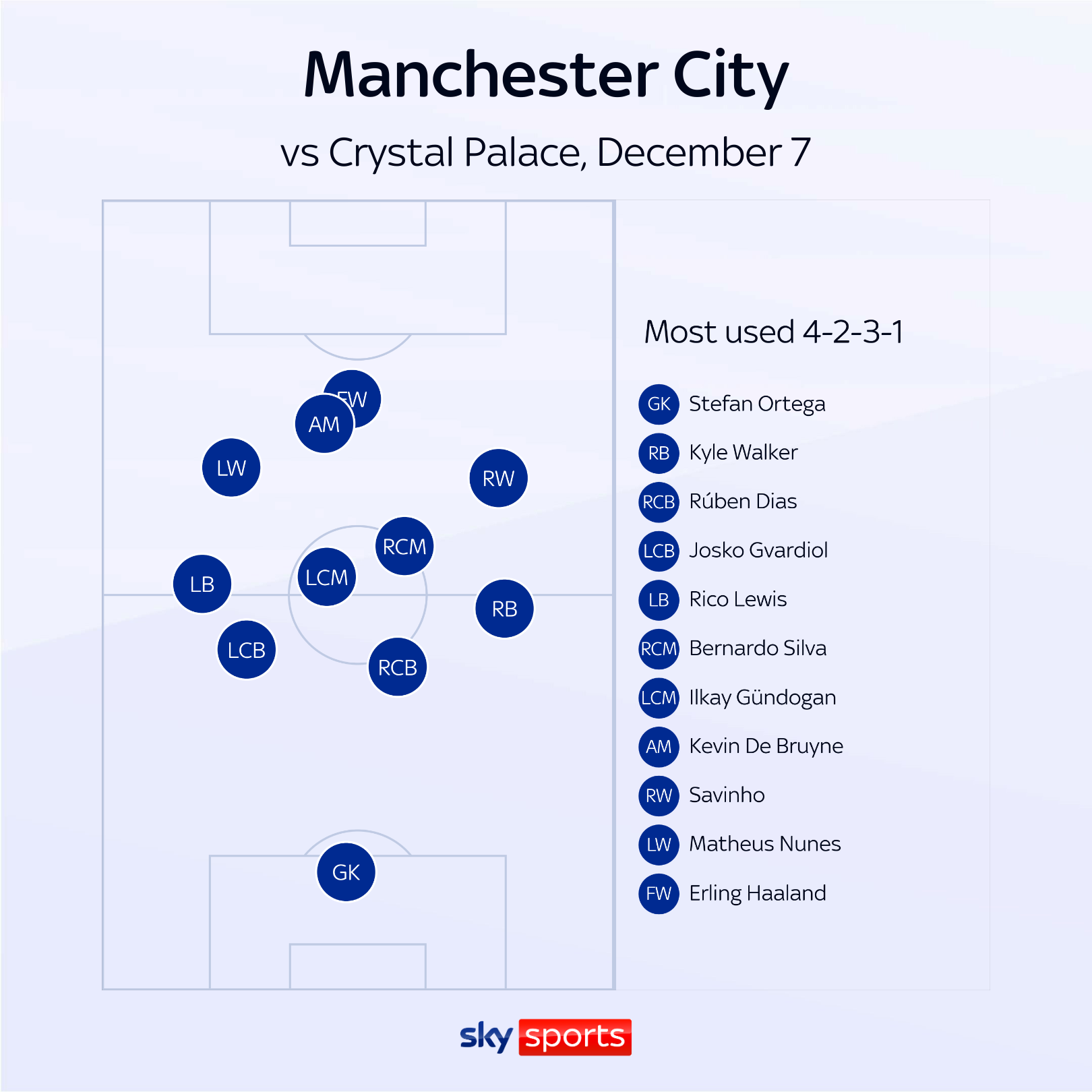[ad_1]
Crystal Palace handed Manchester City another title-race setback at Selhurst Park on Saturday with a 2-2 draw and afterwards boss Oliver Glasner explained how he picked out weaknesses in the defending champions’ game.
The result leaves City eight points off top spot, with Liverpool having a game in hand, while Arsenal and Chelsea – both a point ahead of the title holders – will be itching to pull further clear with London derbies live on Sky Sports on Sunday.
With fitness issues continuing to limit Pep Guardiola’s options and stretch the players he does have available, City are up against it. At Selhurst Park it became apparent how opposition teams are plotting to hurt City right now.
Bring the intensity
“We knew we can play a higher intensity [than City], all the data showed this,” said Glasner afterwards. “We knew when we get into the transitions we’d get in behind. When we get them running maybe they’d struggle a bit.
“City have so much possession in every game but they are lowest in high intensity and sprinting distances and we are fifth or sixth in the league.
“Also, the games they lost this season, they lost to very high intense teams: Bournemouth, Tottenham and Brighton [and Liverpool].
“We were talking about it – it’s a strength of ours, our intensity, the runs we can make in behind with our wing-backs, our strikers and we thought this could help us to win because beating City with possession is not so easy. I don’t know many teams who can do this, so you have to find different things.
“These worked quite well – but it’s just a draw!”
Indeed the stats Glasner is referring to demonstrate his point. Going into this weekend, Man City ranked second-bottom in the Premier League for sprints this season.
Man City had been out-sprinted in 10 of their 14 games going into this round of fixtures. In four of the six games where they’d been out-sprinted by the biggest margin, they had lost.
Seven of their eight victories have come when they’ve either out-run their opponents in terms of distance covered or been within 2km of their opponents.
After the draw, Guardiola highlighted the strain on his squad right now. “We played the last 15 mins with 10 vs 11 [after Rico Lewis’ red card]. We have seven potential starting XI players injured, a lot of players with [lots of] minutes [played], the physicality from Palace is there…”
Finding space around Gundogan
The absence of Rodri is regularly and rightly highlighted as a reason why City can be vulnerable to the transitions and fast breaks Glasner mentions. An injury to Mateo Kovacic hasn’t helped either. And at 34 years old Ilkay Gundogan is struggling out of possession to put out the fires.
With City playing a 4-1-4-1 formation, Glasner spotted the opportunity for his side, with Eberechi Eze and Ismaila Sarr playing off Jean-Philippe Mateta, with Will Hughes and Jefferson Lerma in central midfield, to exploit the spaces around an at-times isolated Gundogan.

Hughes assisted the opener from getting into that position.
“There was so much space on the opposite side next to Gundogan and we didn’t find this space so often,” said Glasner. “We showed the players at half-time. You have one or two touches to be there. If we find this more often we can create more and more chances. The [first] goal was the space we want to find. We should do it more.
“When you play with one No 6, 4-1-4-1, like City is playing, there is a lot of space on the left and right of the No6, then it’s how you find this space. It can be by passing – City found this space by passing for their second goal. We found it on the first goal. Sometimes you need the long ball and go for the second ball.
“When we get our runners into pace and get the space, it’s not so easy to defend us. It was part of the idea to come into these spaces and one thing was long balls and going for long balls.”
Set-pieces
Man City had only conceded once from a set-piece before Saturday but Glasner spotted an opportunity – and Palace capitalised with Maxence Lacroix rising above a rooted Kyle Walker to head in Hughes’ corner in the second half.
It is an area of strength for Palace – only three teams have scored more from dead-ball situations this season – but also a potentially untapped weakness of City, given the players they are missing at the moment.
“They’re missing many good headers,” said Glasner. “Manuel Akanji, Nathan Ake and Rodri – very tall players and good headers in defence. So attacking set plays was a big opportunity for us.”
With City’s problems laid bare, it is clear their upcoming opponents are going to target similar areas of weakness. Guardiola and his players will have to adapt – and hope that some of their currently injured players can return soon to help solve the problems.
[ad_2]
Source link



